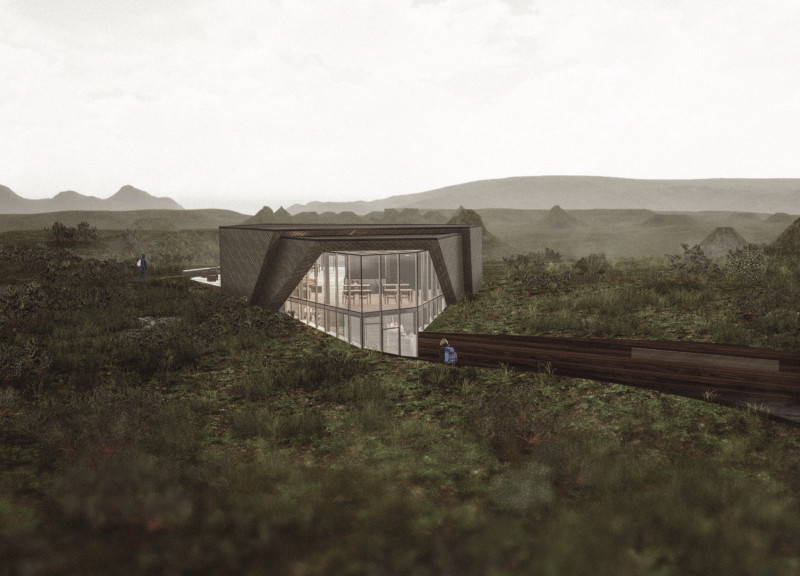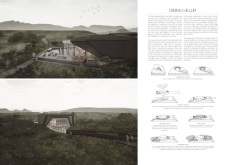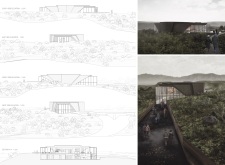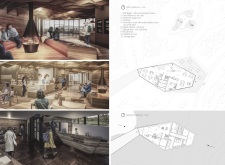5 key facts about this project
The Dimmu Hellir Visitor Center is positioned within the Dimmuborgir Black Lava Fields in Iceland, a region known for its remarkable geological features and rich legends. The design reflects the nearby "Kirkja" rock formation, creating a connection between the building and its natural surroundings. Serving as a point of information and relaxation for visitors, the center offers essential services while enhancing the overall experience of the landscape.
Design Concept
The design incorporates a two-sided open shape that promotes a strong relationship between the interior spaces and the views outside. With glass façades, the structure allows natural light to illuminate the interior while providing visitors with clear sightlines to the striking landscape. This approach fosters a sense of continuity between the building and its surroundings.
Materials and Structure
Rainscreen cladding is used as an external layer to protect the core of the building from the elements, offering shelter for visitors. This choice of material supports the building’s durability and contributes to a comfortable atmosphere. The structure features a lower floor that is partially below ground, minimizing its visual impact and helping it blend into the landscape.
Spatial Organization
The Visitor Center is divided into two levels, with the café and information areas located on different floors. This arrangement ensures that both spaces receive ample natural light and views of the Black Lava Fields, Mývatn Lake, and Hverfjall volcano. A gently sloping path guides visitors from the parking lot to the entrance, providing easy access to facilities like the information center, gift shop, and restrooms.
Visitor Experience
Visitor circulation through the center is designed for exploration and engagement with the environment. An open staircase connects the ground level to the upper floor, where the café and terrace create a space for relaxation. Attention to local folklore enriches the experience, allowing visitors to connect with the cultural significance of the landscape.
The terraces are designed to frame the natural beauty surrounding the center. They invite guests to pause and enjoy the views, offering a quiet space to reflect on their experience in this remarkable setting.





















































